Published Dec 19, 2019
The Surprising Connections Between Star Trek and Bob Dylan
A series of surprising links between the Poet Laureate of Rock ‘n’ Roll and the premiere franchise of the Final Frontier
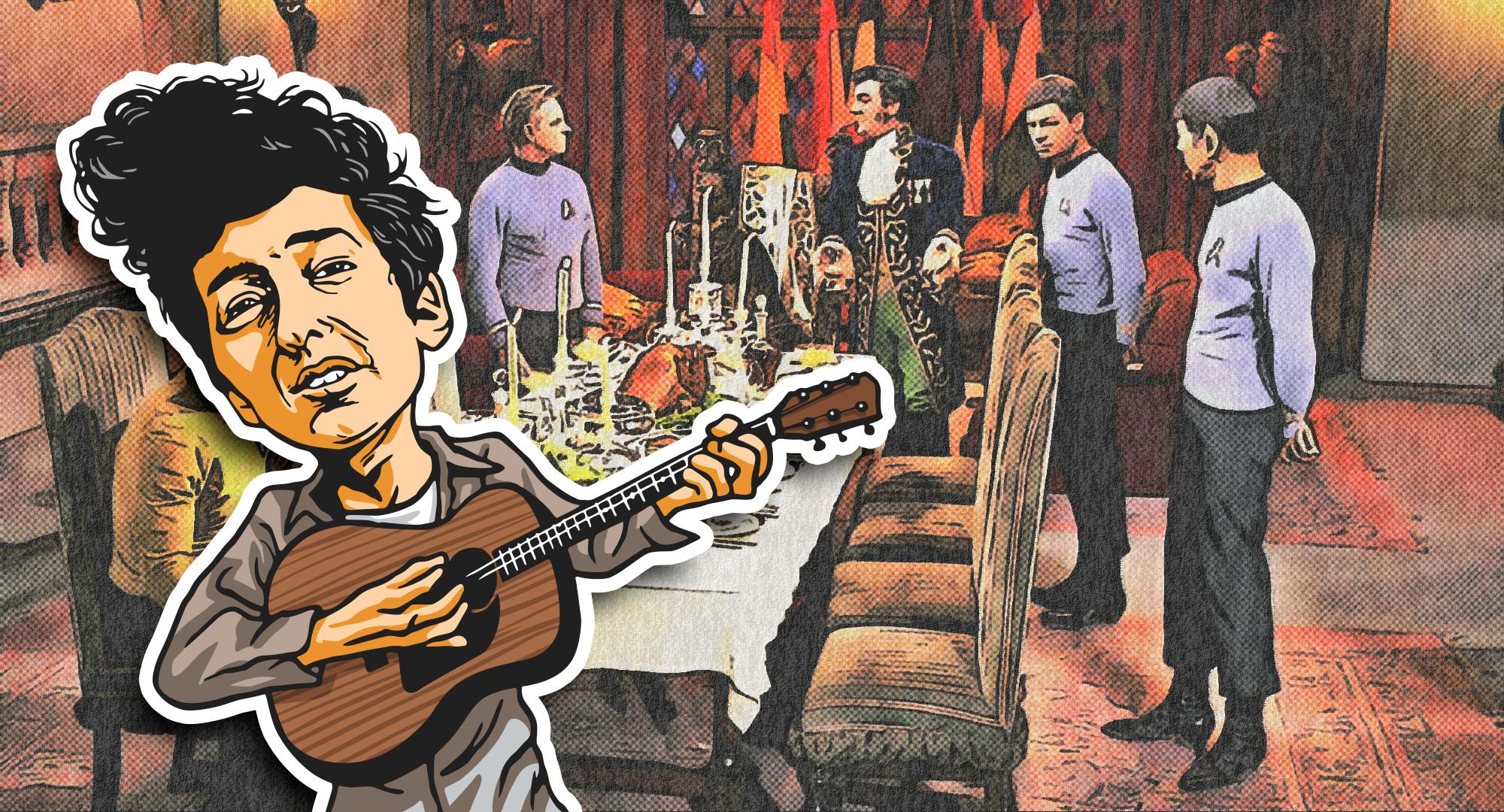
StarTrek.com
Any list of iconic American phenomena of the 1960s – especially that proved to have lasting and global appeal – would need prominent places for both Star Trek and Bob Dylan. The Minnesota-born singer-songwriter is the sole person to have won Grammys, an Oscar, and a Nobel Prize. Both Dylan and Trek have straddled lines between entertainment, art and cultural commentary, and both have inspired legions of devoted fans (as well as legendary rifts between fans over “old” and “new” versions).
Now, unlike fellow science-fiction show Battlestar Galactica, Star Trek has never built a plotline around a Dylan song. Nonetheless, there are still a number of surprising links between things Trek and Dylan.
Playing Charades
Anyone who associates Dylan’s music solely with the spare acoustic directness of his early work would be amazed to listen to his wildly overproduced 1985 album Empire Burlesque. The opening track, “Tight Connection to My Heart (Has Anybody Seen My Love),” contains this line:
“I’ll go along with this charade until I can think my way out.”
It is reminiscent of this exchange in TOS’s “The Squire of Gothos”:
Sulu: Captain, how far do we go along with this charade?
Kirk: Until we can think our way out.
This seems like more than a coincidence, especially in such a citation-heavy album. Dylan scholar Clinton Heylin claims to have first recognized this similarity. However, others have pointed to a similar line in Tokyo Joe (1949) as an equally likely source, especially since other Hollywood films of the 1940s are referenced throughout Empire Burlesque. Perhaps Tokyo Joe is the common source for both “The Squire of Gothic” and “Tight Connection to My Heart.”
Impossible Tickets

StarTrek.com
Unlike such contemporaries as John Lennon and Stevie Wonder, Dylan has never been mentioned in a Trek episode or film. However, in Greg Cox’s novel Assignment: Eternity, Roberta Lincoln is described as carrying tickets to an upcoming Dylan concert in New York City. The setting is 1969, and Dylan – in the middle of a lengthy break from touring after his 1966 motorcycle crash – played publicly only twice that year, once on The Johnny Cash Show and once at the Isle of Wight Festival. He would not play NYC until New Year’s Day 1972, as a guest of The Band. Perhaps Gary Seven’s involvement resulted in a more active Dylan concert schedule in this timeline. Small though it may be, the reference earns Dylan a page on MemoryBeta.
She Once Was a True Love of Mine
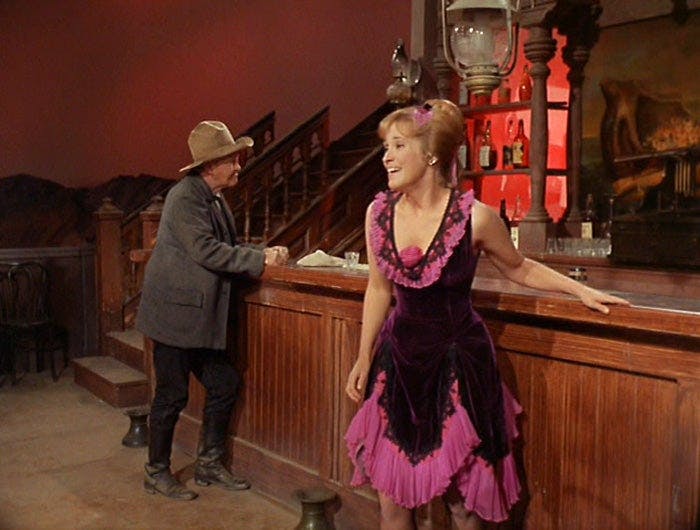
StarTrek.com
Actress Bonnie Beecher appeared in TOS’s “Spectre of the Gun,” playing Sylvia, the saloon girl in the Melkotians’ recreation of Tombstone, Arizona. Beecher was an early girlfriend of Dylan in Minnesota, and is perhaps the inspiration for Dylan’s classic love song “Girl from the North Country.” They clearly kept in touch; in his memoir Chronicles, Volume One, Dylan describes visiting her on the Hawaii set of the war film In Harm’s Way (1965) and getting to meet John Wayne. Beecher married another Dylan associate, Hugh Romney, aka the hippie clown Wavy Gravy, and is now known as Jahanara Romney.
From Castle Street to Cardassia
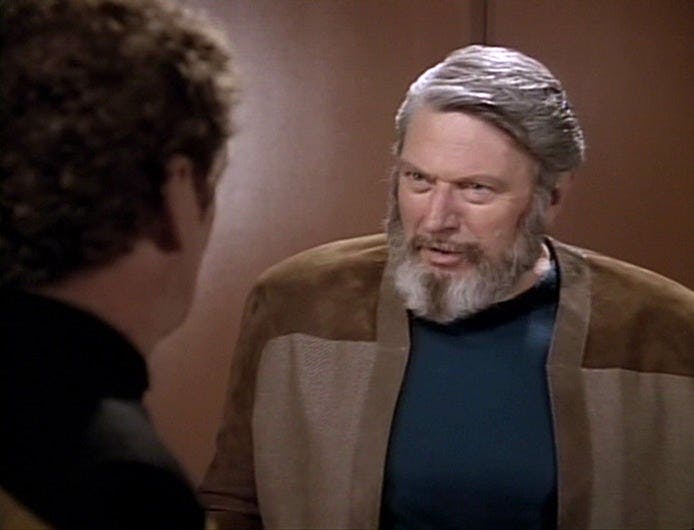
StarTrek.com
There are other Dylan associates with Trek links. Fiddler Byron Berline, who appears playing his instrument in “Where No One Has Gone Before,” played on Dylan’s soundtrack album Pat Garret & Billy the Kid. And decades before he played Sergey Rozenko, Worf’s adoptive father, actor and folksinger Theodore Bikel was an early friend and supporter of Dylan.
Special mention should also go to David Warner. Late in 1962, the BBC brought Dylan to London to act in a television play called Madhouse on Castle Street. Finding Dylan’s acting skills not up to the challenge, they split the role in two, giving the dramatic material to Warner and using Dylan as a sort of Greek chorus character. Decades later, Warner would play three Star Trek characters, including Chancellor Gorkon and Gul Madred.
Dylan the Trekkie?
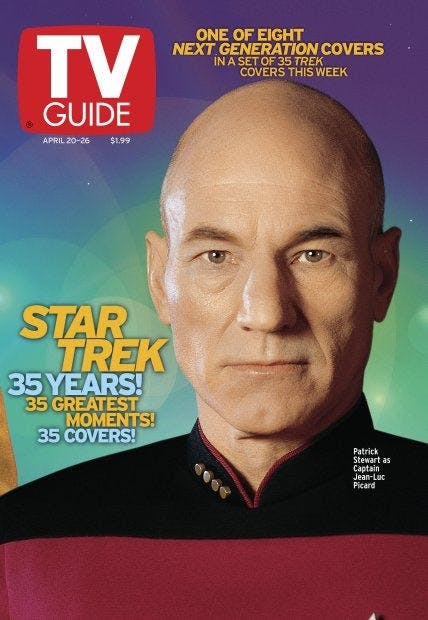
StarTrek.com
Recently, the podcast The Trek Files revealed two 1989 internal memos from TNG listing celebrities whose Star Trek fandom might interest TV Guide. The first is by Richard Arnold, research consultant and longtime Roddenberry assistant, and the second by Rick Berman himself. Dylan is on Berman’s list but not Arnold’s, so he had clearly heard something. Patrick Stewart also identified Dylan as a Star Trek fan in at least one interview.
A Strange Photoshoot
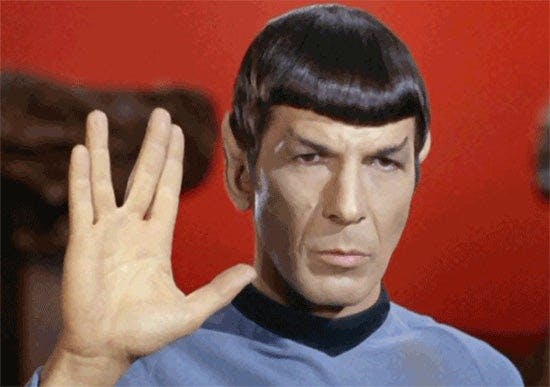
StarTrek.com
In 2018 an image circulated on social media showing Dylan posing for a picture with a Spock impersonator (as well as a Don King impersonator) on Hollywood Boulevard. Being predictably unpredictable, Dylan reportedly hopped out of his SUV without parking it and walked over to take these pictures. The faux-Spock, Paul Forest, said this happened in 2014 and that Dylan actually gave the Vulcan salute). “I think he’s a Trekker,” says Forest.
The Transformed Song
“Mr. Tambourine Man” is a key Dylan song. As originally released on Bringing It All Back Home (1965), it was a delicate, beguiling work full of dreamy imagery influenced by the French symbolist poets. That same year, the Byrds covered “Mr. Tambourine Man” for their debut single, which was the first number one hit for any Dylan composition. Lush and angelic, the Byrds’ version is often considered the inauguration of folk rock as a viable commercial style. Taken together, the two versions work to illustrate how the same song can be arranged and performed very differently to equal greatness.
It is the Byrds’ version that clearly influenced the cover of “Mr. Tambourine Man” that appeared on William Shatner’s notorious album The Transformed Man (1968). Like most of that album, this track fits into “must be heard to believed” territory, as Shatner twists the lyrics into bizarre knots against lurid over-orchestration and incongruous backup singers. It ends with the most anguished Shatner scream not involving a salt vampire. It is as inimitably Shatnerian as the version of “Lucy in the Sky with Diamonds” on The Transformed Man but somehow less fun. Nonetheless, after the Byrds and Dylan himself, this is probably the third best known version of the song.
In recent years, music by artists like the Beastie Boys, Al Green and Wyclef Jean has been heard on Star Trek. Perhaps it will be Dylan’s turn in time. But if that happens, I doubt it will be “Mr. Tambourine Man.”
Murray Leeder (he/him) holds a Ph.D. from Carleton University and is a Research Affiliate at the University of Manitoba. His books include Horror Film: A Critical Introduction and The Modern Supernatural and the Beginnings of Cinema.

